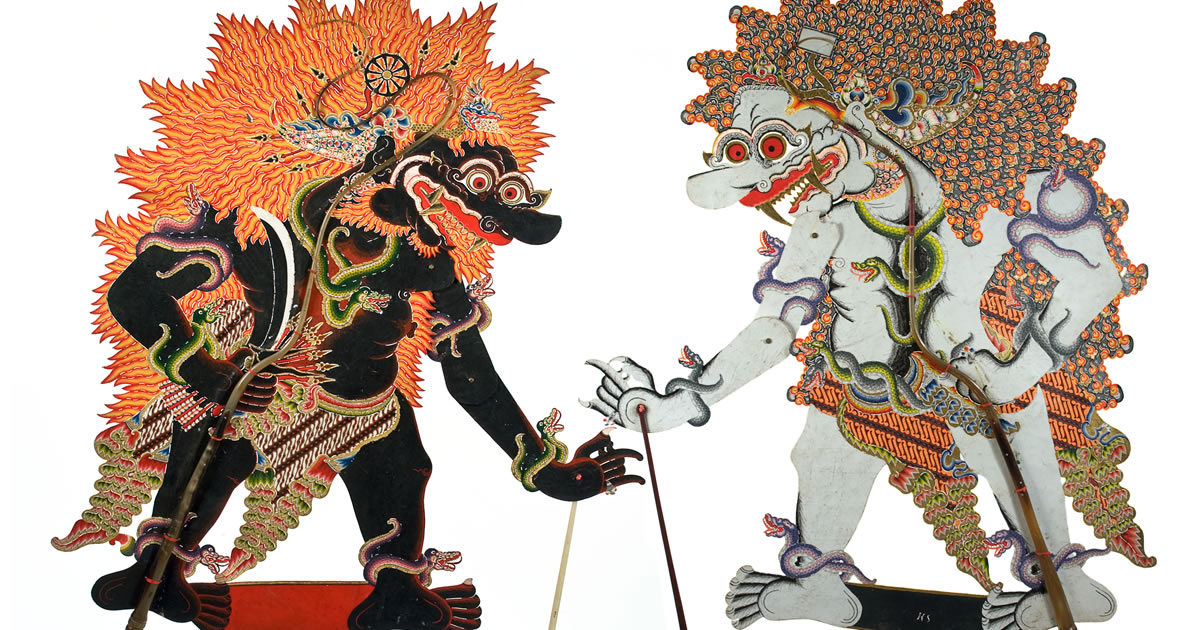 Mar 8, 2009 through Mar 14, 2010
Mar 8, 2009 through Mar 14, 2010
Dancing Shadows, Epic Tales: Wayang Kulit of Indonesia introduced the distinct form of wayang kulit found in Central Java. Various aspects of this performance art were explored, including gamelan, artistic techniques involved in making shadow puppets, the cast of characters, and regional variations of wayang. A puppet workshop, where Visitors of all ages made and played with shadow puppets was complemented by computer kiosks to learn more about Gamelan instruments and Shadow puppets.
This highly refined and complex art form may be performed to commemorate important rites-of-passage (such as circumcisions and weddings), holidays, national events (such as political elections), and personal accomplishments.
Performances are usually based on classical literature such as the Indian epics, Mahabharata and Ramayana with contemporary issues incorporated into particular scenes. In fact, the Museum of International Folk Art houses George Bush and Saddam Hussein shadow puppets. Important moral, ethical, and philosophical ideas are taught in every show, while entertaining the audience at times with roaring humor and special action-packed scenes.
The exhibit’s highlight was a 3.5 meter, double sided screen. Much like audiences in Central Java, museum visitors can watch dancing and battling shadows (on video) on one side of the screen and walk around the stage to watch (a video of) the shadow master at work from “behind the scenes.”
This award winning exhibit featured a full gamelan ensemble and the Museum’s own extraordinary collection of wayang kulit— a full set of over 200 gold and bronze-leafed Surakarta-style, court-based shadow puppets acquired from some of Java’s prominent puppeteers. The puppets flank the screen to the left and right creating the typical yet stunning arrangement that can be seen at actual performances in Central Java. Dancing Shadows, Epic Tales: Wayang Kulit of Indonesia opened March 8, 2009 and closed March 14, 2010 and is available on-line
More Info